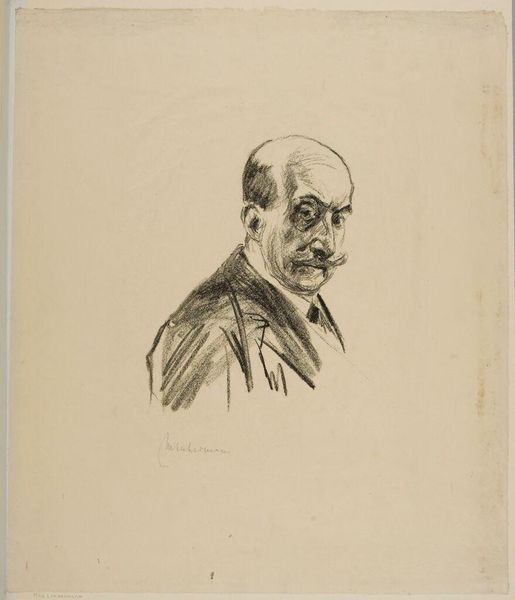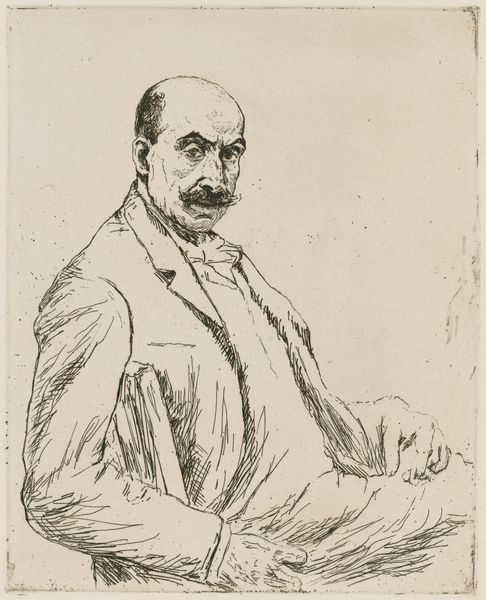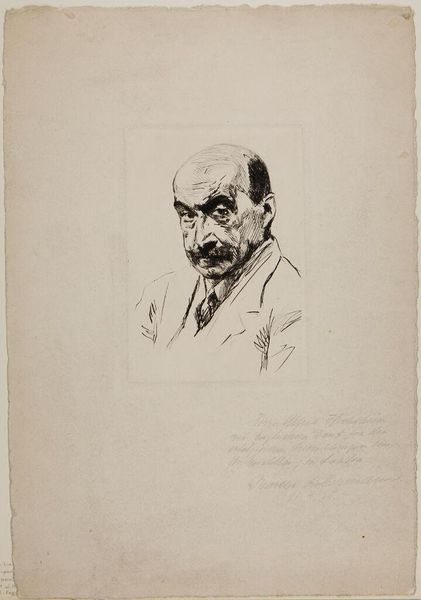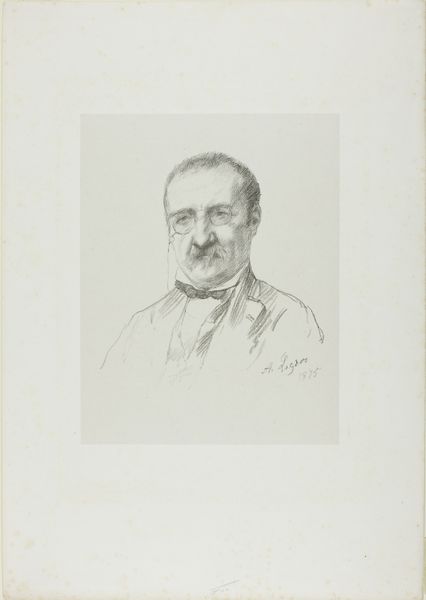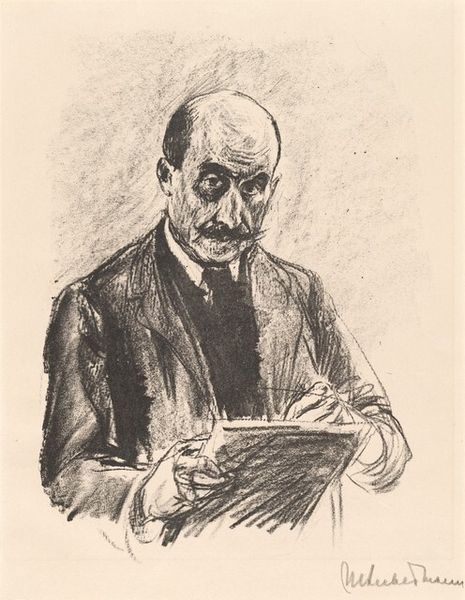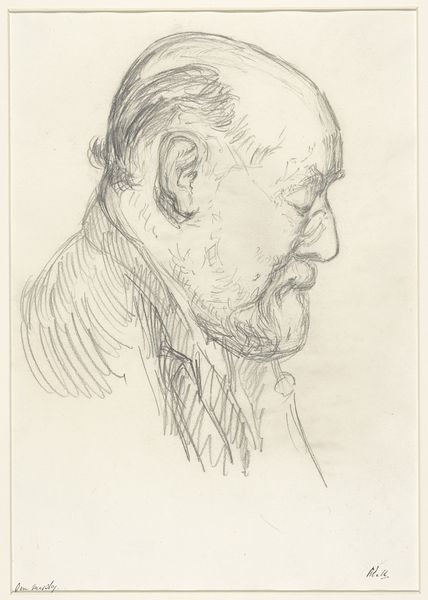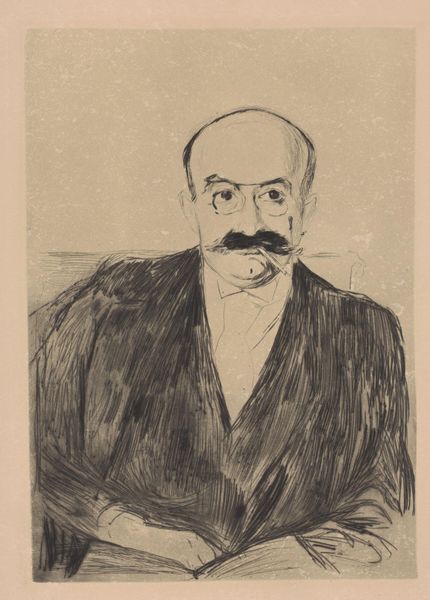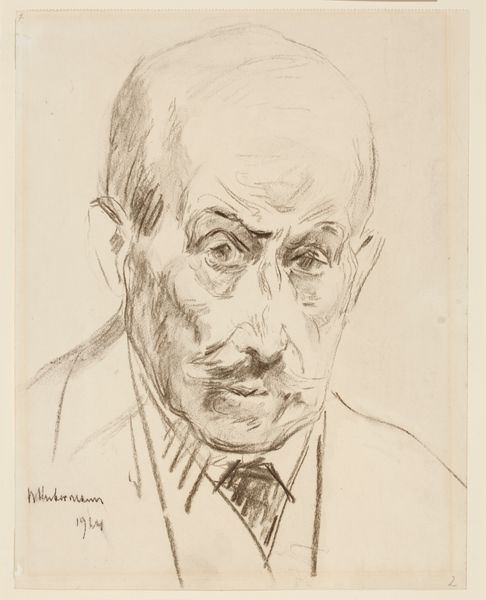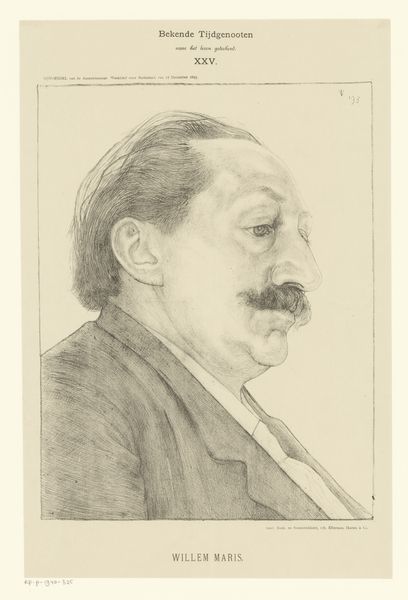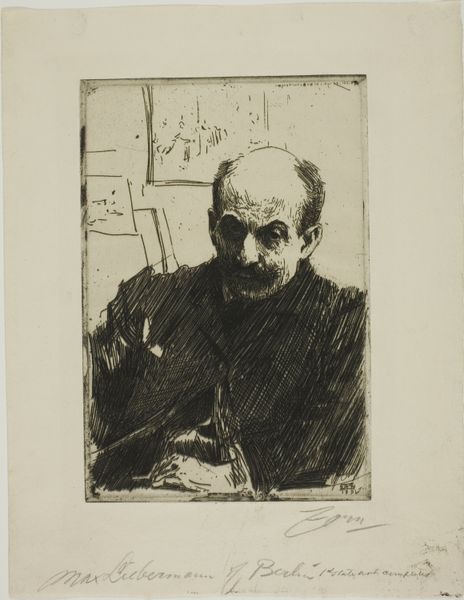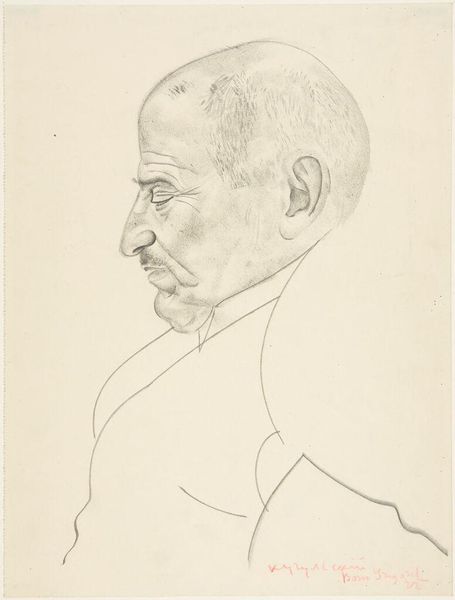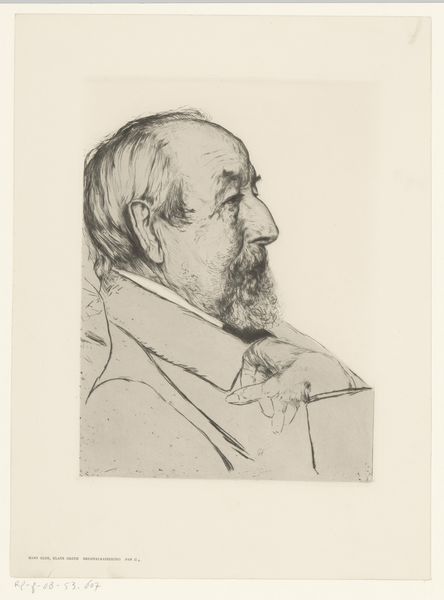
Dimensions: height 560 mm, width 428 mm
Copyright: Rijks Museum: Open Domain
Curator: Here we have Max Liebermann’s "Self-Portrait," a pencil drawing made sometime between 1900 and 1935. What strikes you initially about this piece? Editor: It’s remarkably direct, almost confrontational. The artist's gaze, combined with the stark simplicity of the pencil sketch, evokes a feeling of introspection. There’s a gravity there, wouldn't you agree? Curator: Absolutely. The immediacy of the pencil as a medium is key. Think about it—a pencil allows for swift mark-making, minimal barrier between artist’s thought and tangible expression. It’s interesting to consider his class background reflected in this relatively unpretentious work. Editor: Speaking of immediacy, look at the angles of his jacket—there’s definitely impressionistic influence at play. Considering Liebermann's role in German Impressionism, how does this portrait function in constructing and reflecting his identity, both as an artist and a Jewish intellectual, during a period of intense social change? Curator: It’s interesting to position this as self-fashioning, given the work's presumed intimacy as a self-portrait sketch. There is also a tangible simplicity in the pencil work itself. Look how Liebermann builds shadow and form simply using the varying pressures and directions of the pencil. There’s something very honest in that direct approach to his materials. Editor: Precisely. And in that presumed honesty we can also consider that images, regardless of media, also serve ideological purposes and shape cultural memory. This self-representation certainly seems aware and considered, offering an almost stoic response amidst brewing historical storms. The precision of the features drawn above a hazier body, as if the Liebermann, the artist, is an idea foremost. Curator: It pushes us to think about the broader production of self and image during the period and his understanding of his art as a commodity too, yes. Thinking about pencil drawing now also in connection to the role of sketching and draftsmanship as foundational art skills too, brings us closer to Liebermann's practice. Editor: Thank you. I leave today appreciating that, like all portraits, Liebermann's self-image holds complexities reflective of identity, artistic innovation, and political consciousness. Curator: A simple medium offering such nuanced insights—it underscores the potential depth in the study of materials and production processes!
Comments
No comments
Be the first to comment and join the conversation on the ultimate creative platform.
